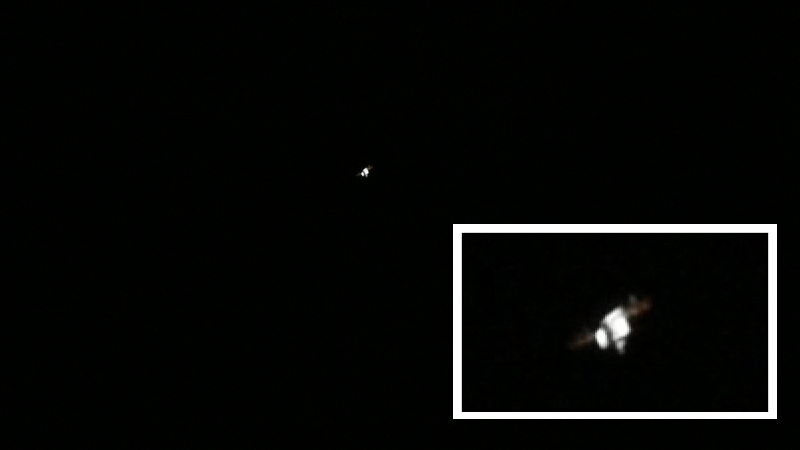DSLR Astrophotography: Mercury & Saturn, Moon, ISS
Posted: 26 November 2017
|
Open: Saturday, 25 November 2017, 1713 MST Temperature: 77°F |
Session: 1171 Conditions: Mostly clear |
Equipment Used:
12" f/8 LX600 w/StarLock
2" 24mm UWA eyepiece
Camera:
D7200 DSLR
After opening the observatory I SYNCed the observatory clock using WWV time signals.
1718 MST: sunset.
1721 MST: LX600 ON, StarLock OFF, High Precision OFF.
Next, I updated the TLE in the AutoStar for this night's good but short pass of the International Space Station (ISS).
Then viewed the Moon, 102X.
1732 MST: viewed Saturn and then Mercury, both very low in the southwestern sky, 102X. Mercury showed a slightly gibbous phase. Tweaked the finderscope alignment using Saturn in preparation for the upcoming ISS pass.
I then began waiting for Mercury and Saturn to become visible to the naked eye.
1741 MST: viewed Mercury and Saturn, 12x50 binoculars. Both were visible in the same field-of-view.
1750 MST: Mercury and Saturn were now visible with the naked eye. I stepped outside of the observatory to take some photos of the planets using the D7200 DSLR.
1758 MST: Cassiopeia Observatory with Mercury and Saturn, f/4.2, 1/30sec, ISO 1600, FL 38mm:

Click or tap on image for larger version
Returned to the observatory. Mounted the D7200 DSLR at prime focus of the 12" telescope. Took this photo of the Moon, 1/400sec, ISO 400, White Balance Auto:

1812 MST: reoriented the DSLR for the upcoming ISS pass. Slewed to the star Altair, focused using a Bahtinov Mask, and locked the mirror. SYNCed on Altair and did a final tweak of the finderscope alignment. Then waited for the ISS pass to begin at 1853 MST.
For imaging of the ISS I did an HD video recording, 1/2000sec, ISO 2500, WB Auto. During most of the short pass I could see the ISS on the DSLR live view screen. That helped with tracking. This is a frame from the video recording near the end of the pass (just before the ISS went into the Earth's shadow). The inset shows a magnified view of the ISS from the frame.

Returned to the Moon to check focus; it was good. Removed the camera from the telescope.
1905 MST: last look at the Moon, 102X.
1906 MST: LX600 OFF.
|
Close: Saturday, 25 November 2017, 1913 MST Temperature: 66°F |
Session Length: 2h 00m Conditions: Clear |
I am interviewed in this Southwest Forklife Alliance article "Dark Sky Places: A Bright Idea".
Comments are welcome using Email. Twitter users can use the button below to tweet this report to their followers. Thanks.
Cassiopeia Observatory Home Page
Copyright ©2017 Michael L. Weasner / mweasner@me.com
URL = http://www.weasner.com/co/Reports/2017/11/26/index.html
